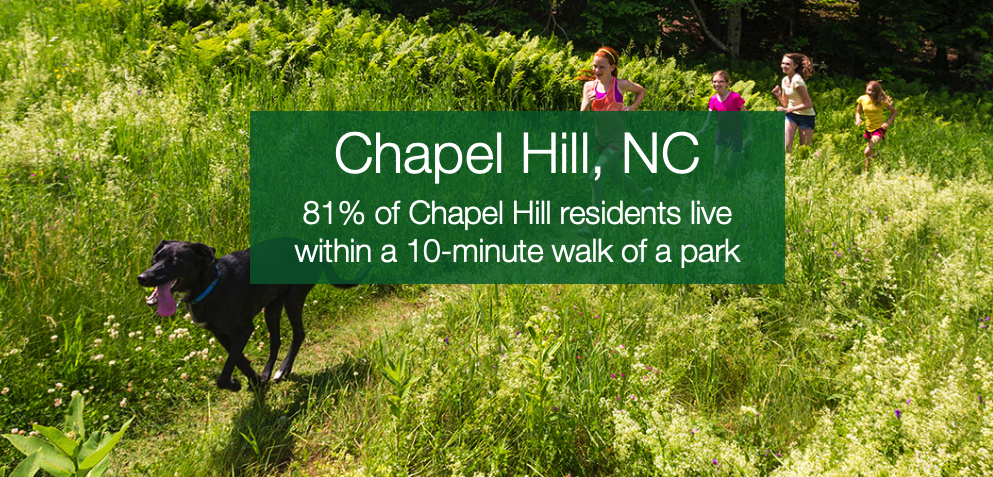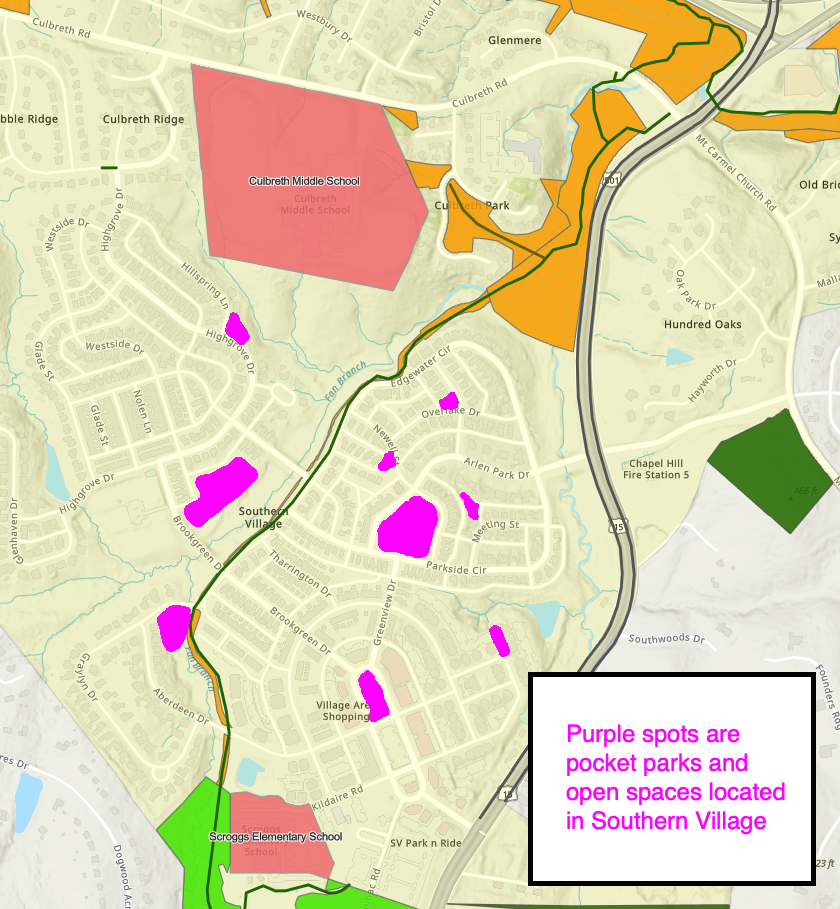
Last November, (then) Chapel Hill Town Council candidate Adam Searing wrote a widely referenced column in the News and Observer claiming that Chapel Hill “comes out dead last in every category compared to our neighbors [for park space.]”
Councilmember Searing’s information was taken from the Trust for Public Land (TPL)’s website, which uses crowdsourced data to create Park Scores – rankings of communities based on demographic data and proximity to parks. Not surprisingly, many folks were upset about Chapel Hill’s relative ranking compared to our regional peers. Some other folks were a little confused and took a closer look at TPL’s assumptions. And, as it turns out, the TPL website was missing some key parks in Chapel Hill!
Perhaps in response to feedback about the inaccuracy of the data, TPL updated their website. And, with the new data, the town looks.. actually …pretty darn good compared to our neighbors!
Chapel Hill ranks ahead of Durham and Raleigh in the percentage of residents who live within a 10-minute walk of a park. It also ranks first in comparison to Durham and Raleigh in the percentage of low-income residents who live within a 10 minute walk of a park, first in the percentage of children who live within a 10-minute park, and first in the percentage of seniors who live within a 10-minute walk of a park.
We should be clear: Chapel Hill did not add any parks between last November and now. All that changed was ensuring the Trust for Public Land had accurate data for park space in Chapel Hill.
For more accurate data on parks, we recommend using the Town of Chapel HIll’s recently updated Parks, Open Space Reserve Areas, Greenways, & Bikeways interactive map instead using TPL’s crowdsourced (though not quality checked) data.
Chapel Hill’s tool provides a far more comprehensive view of public park space in the Town because, unlike TPL’s data, it includes open space reserve areas, school properties, and (publicly accessible) UNC properties such as Battle Park.
Given the importance of parks and open space to our mental and physical wellbeing, we are glad to know that Chapel Hill continues to lead the Triangle in accessible, inclusive, and – quite frankly- amazing natural spaces.
Some interesting facts about parks in Chapel Hill:
1,376 acres of space the town considers public parks
1,242 acres of open space managed by other agencies.
13,500 acres comprise the entire Town of Chapel Hill
Are neighborhood pocket parks included in these totals? No.
Some neighborhoods in town are sprinkled with smaller, pocket parks. One good example is Southern Village, which has parks and little public spaces. (and are not counted on the Town map or on the TPL website)

